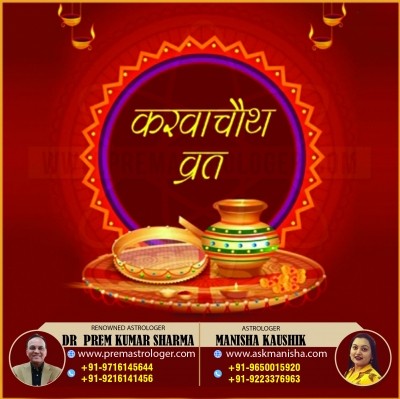
Karwa Chauth Puja Process:
The pooja preparations start a day in advance. Married women buy the shringar or the traditional adornments and the other pooja items like the karwa, matthi, heena etc.
Early in the morning they prepare food and have it before sunrise. The morning passes by in other festive activities like decorating hand and feet with heena, decorating the pooja thali and meeting friends and relatives.
In the late afternoon women gather at a common place like temple or a garden or someones' place who has arranged the pooja. An elderly lady or the pujarin narrates the legend of Karwa Chouth.
The essentials of this gathering and listening of the Karwa chauth story , a special mud pot, that is considered a symbol of lord Ganesha, a metal urn filled with water, flowers, idols of Ambika Gaur Mata, Goddess Parwati and some fruits, mathi and food grains. A part of this is offered to the deities and the storyteller.
Earlier an idol of Gaur Mata was made using earth and cowdung. Now just an idol of Goddess Parwati is kept. Every one lights an earthen lamp in their thalis while listening to the Karwa story. Sindoor, incense sticks and rice are also kept in the thali.
At this time the women wear heavy saris or chunries in red , pink or other bridal colors, and adorn themselves with all other symbols of a married women like, nose pin, tika, bindi, chonp, bangles, earrings etc.
Once the moon rises, the women see its reflection in a thali of water, or through a dupatta or a sieve. They offer water to the moon and seek blessings. They pray for the safety, prosperity and long life of their husbands. This marks the end of the day long fast.
Disclaimer: The information presented on www.premastrologer.com regarding Festivals, Kathas, Kawach, Aarti, Chalisa, Mantras and more has been gathered through internet sources for general purposes only. We do not assert any ownership rights over them and we do not vouch any responsibility for the accuracy of internet-sourced timelines and data, including names, spellings, and contents or obligations, if any.